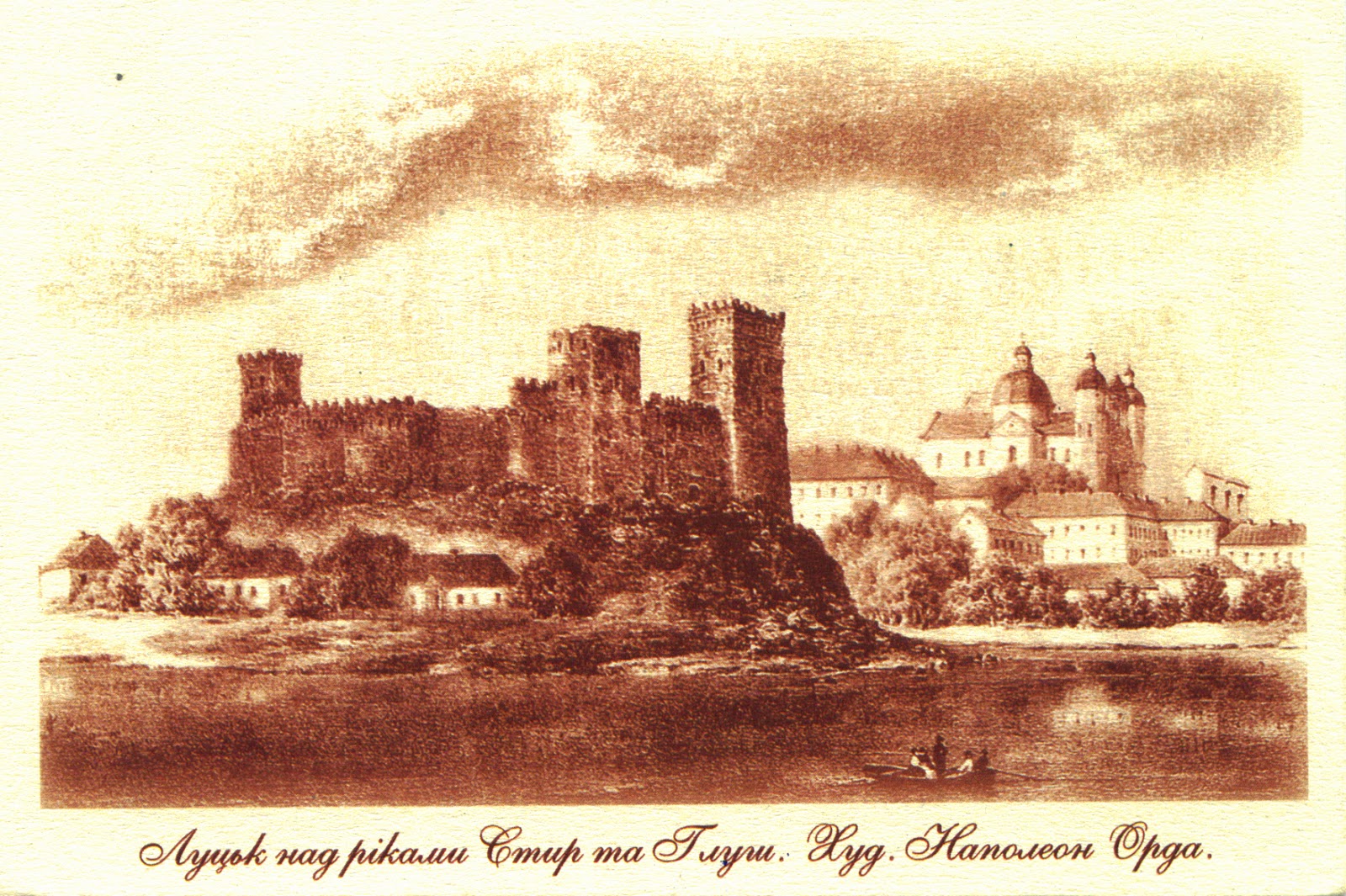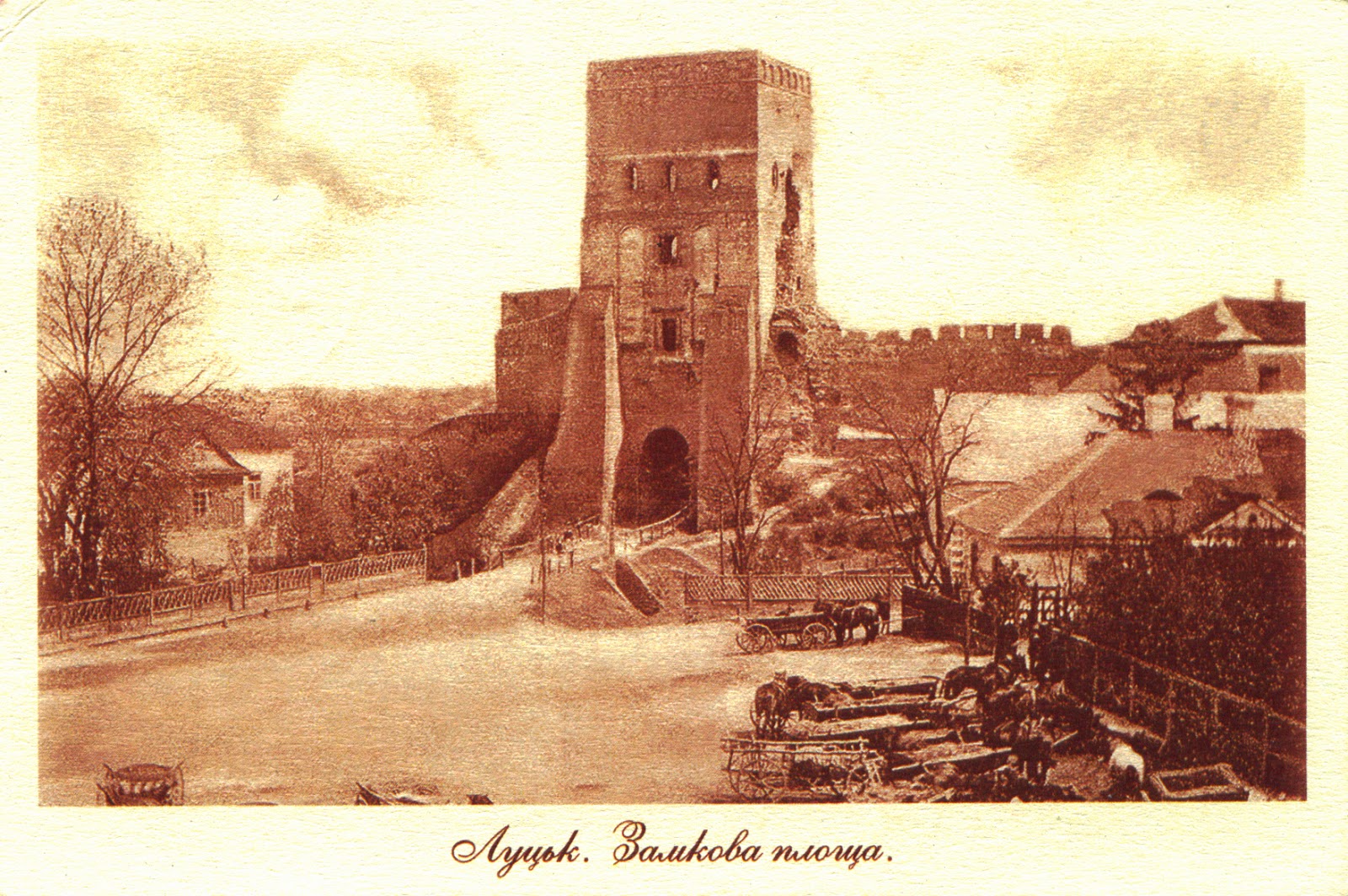The castle repelled sieges by numerous potentates, including Casimir the Great (1349), Jogaila (1431), and Sigismund Kęstutaitis (1436). Its walls formerly enclosed St. John's Cathedral, the residence of the Grand Duke of Lithuania, and an episcopal palace. Of these buildings, only the Neoclassical palace of the bishops still stands. In castle took place in 1429 a conference of monarchs, having as subject the Tartar threat. In total more than 15,000 guests came to this congress, while the population of Lutsk itself was only about 5,000 residents.
In 1432 Volhynia became a fief of the Crown of the Kingdom of Poland and Lutsk became the seat of the governors, and later the Marshalls of Volhynia. In the same year, the city was granted Magdeburg rights, so it continued to prosper for a while, but during the Khmelnytskyi Uprising
was looted and the population was slaughtered or fled. The town never
fully recovered after that. Besides, in 1781 and 1845 was struck by
devastating fires, and in 1795 was annexed by the Russia.
In WWI the town passed through several hands, and during the Polish-Bolshevik War (1919-1921) was devastated and largely depopulated, finally being gained by Poland. In 1939 was annexed by the Soviet Union, in 1941 by Nazi Germany, and in 1944 again by soviets. During this period, both the Germans and the Soviets exterminated, deported or expelled almost the entire Jewish and Polish population. At first the castle was an example of romanesque-gothic architecture, but during an early reconstruction in the 16th century it gained Renaissance features.
It has the shape of an irregular triangle, and its towers are square and surprise visitors by their grand size and simple shape. At the western extreme is the Nadbramna tower, or Vjizna (Entrance tower - in the second and third postcard), which formerly was connected with the wooden drawbridge. The powerful buttress emphasizes the castle’s strength and inviolability. At the eastern point is the Styr tower (Svydrygaila), which was the location of the chancery and archives, where a half-million documents were saved in so called grodski books.
The third tower is Vladycha (the Dukes’ tower). Under the wall connecting the Dukes’ and the Styr towers, there is a huge cellar, where food products were stored in case of a Castle siege. The unique in Ukraine bell exposition “Volyn Bells. Past and Present” is also situated on the Castle grounds. There are 90 bells (between 17th and 20th centuries) in Vladycha tower from Ukraine, Russia, Poland, Austria and Germany.
About the stamp
The stamp belongs of a series of definitive stamps issued starting with 2001, about which I wrote here.
References
Lutsk - Wikipedia
Lubart's Castle - Wikipedia
Lutsk - the Southern Capital of the Lithuanian-Rus State - Visit Lutsk
Lutsk castle is one of the most powerful fortresses of Volyn Region - Great Castlle of Europe
Sender: Marius Vasilescu
Sent from Lutsk (Volyn Oblast / Ukraine) on 01.03.2013
In WWI the town passed through several hands, and during the Polish-Bolshevik War (1919-1921) was devastated and largely depopulated, finally being gained by Poland. In 1939 was annexed by the Soviet Union, in 1941 by Nazi Germany, and in 1944 again by soviets. During this period, both the Germans and the Soviets exterminated, deported or expelled almost the entire Jewish and Polish population. At first the castle was an example of romanesque-gothic architecture, but during an early reconstruction in the 16th century it gained Renaissance features.
It has the shape of an irregular triangle, and its towers are square and surprise visitors by their grand size and simple shape. At the western extreme is the Nadbramna tower, or Vjizna (Entrance tower - in the second and third postcard), which formerly was connected with the wooden drawbridge. The powerful buttress emphasizes the castle’s strength and inviolability. At the eastern point is the Styr tower (Svydrygaila), which was the location of the chancery and archives, where a half-million documents were saved in so called grodski books.
The third tower is Vladycha (the Dukes’ tower). Under the wall connecting the Dukes’ and the Styr towers, there is a huge cellar, where food products were stored in case of a Castle siege. The unique in Ukraine bell exposition “Volyn Bells. Past and Present” is also situated on the Castle grounds. There are 90 bells (between 17th and 20th centuries) in Vladycha tower from Ukraine, Russia, Poland, Austria and Germany.
About the stamp
The stamp belongs of a series of definitive stamps issued starting with 2001, about which I wrote here.
References
Lutsk - Wikipedia
Lubart's Castle - Wikipedia
Lutsk - the Southern Capital of the Lithuanian-Rus State - Visit Lutsk
Lutsk castle is one of the most powerful fortresses of Volyn Region - Great Castlle of Europe
Sender: Marius Vasilescu
Sent from Lutsk (Volyn Oblast / Ukraine) on 01.03.2013






beautifull series :-)
ReplyDeletegreetings from PL :)
Indeed. Thanks for visiting my blog.
Deletethey worth all the effort and the run to find them! (Marius)
ReplyDeleteÎntr-adevăr. Mulţumesc încă o dată (bine că ai semnat în paranteză, pentru că de obicei anonimii îi şterg). Mă străduiesc să ajung la zi cu postările, dar nu prea reuşesc. :(
Delete